If there’s any takeaway from our current global situation, it’s that one of the most important things in this world is FAMILY. We may be cut off from a lot of things while social distancing, but our families at home are a bigger part of our daily lives than ever.
As teachers, we’ve had to extensively modify many learning activities (or do away with certain ones all together) while schools have been closed on account of COVID-19. But this family history project is one that I usually assign to be completed at home anyway, so it’s very conducive to distance learning. And now that students are spending more time than ever with their immediate families, it’s an opportunity for them to further connect with their loved ones by learning about their heritage.
I convey to students the idea that their family’s past is something to be treasured. With that in mind, each student gets to create their own treasure box. Any container that they have around the house will work. They can decorate a cardboard box, a shoe box, etc. It can also be a box that actually looks like a treasure chest if they happen to have one (the one pictured below is from Amazon, and I know there are similar ones at places like Michaels and Hobby Lobby).
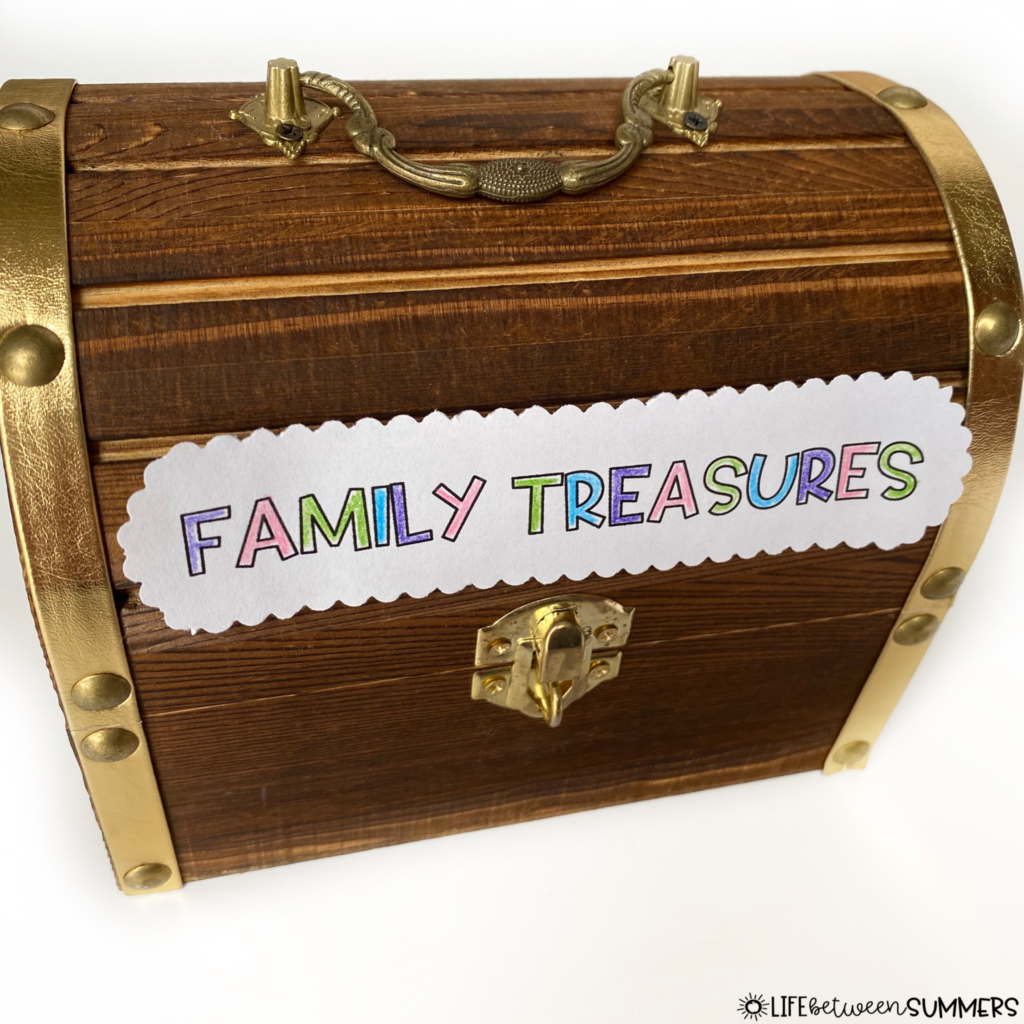
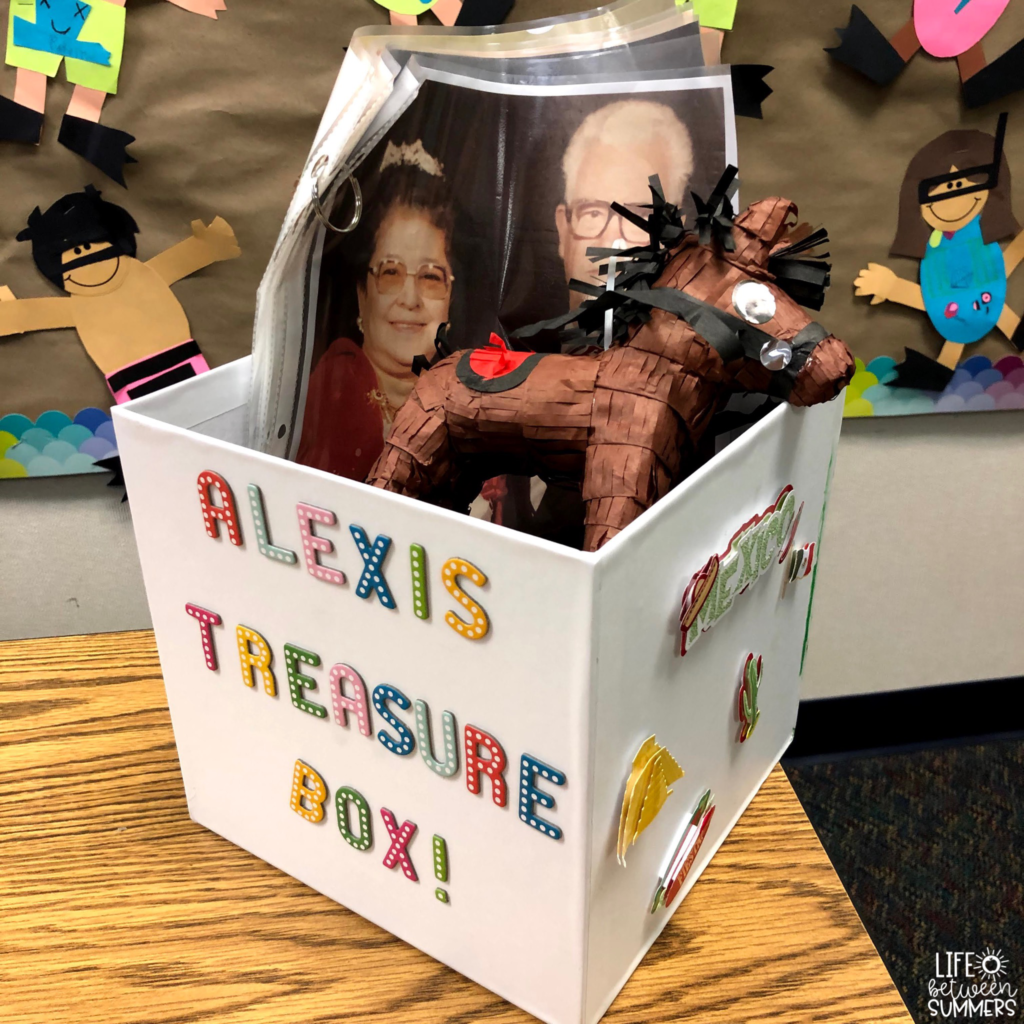
I provide them with a list of “treasures” to put inside the box that they make (see full list in the project guidelines below).
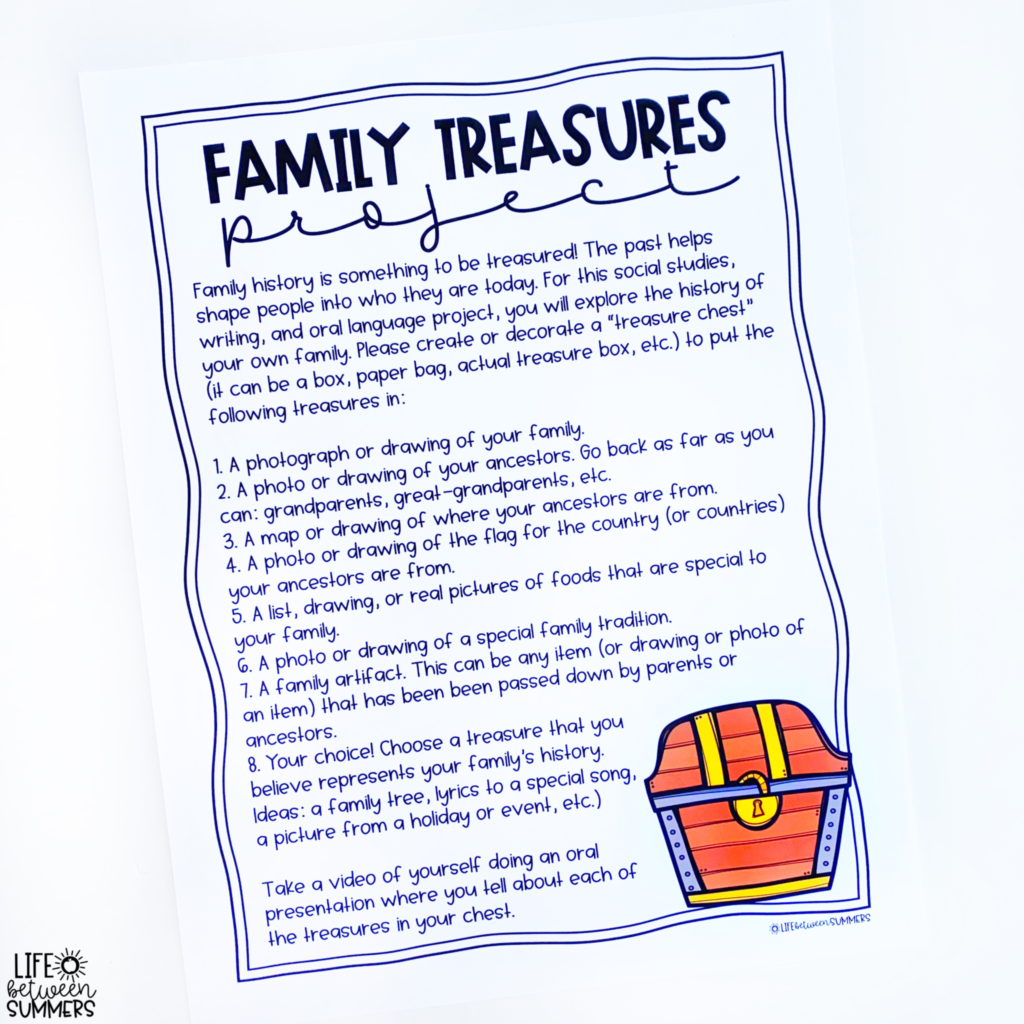
Through this process of creating and collecting items to add to their treasure box, students are able to absorb quite a bit of knowledge about their family’s past, culture, and traditions. They also become familiarized with vocabulary such as “ancestor” and “artifact.”
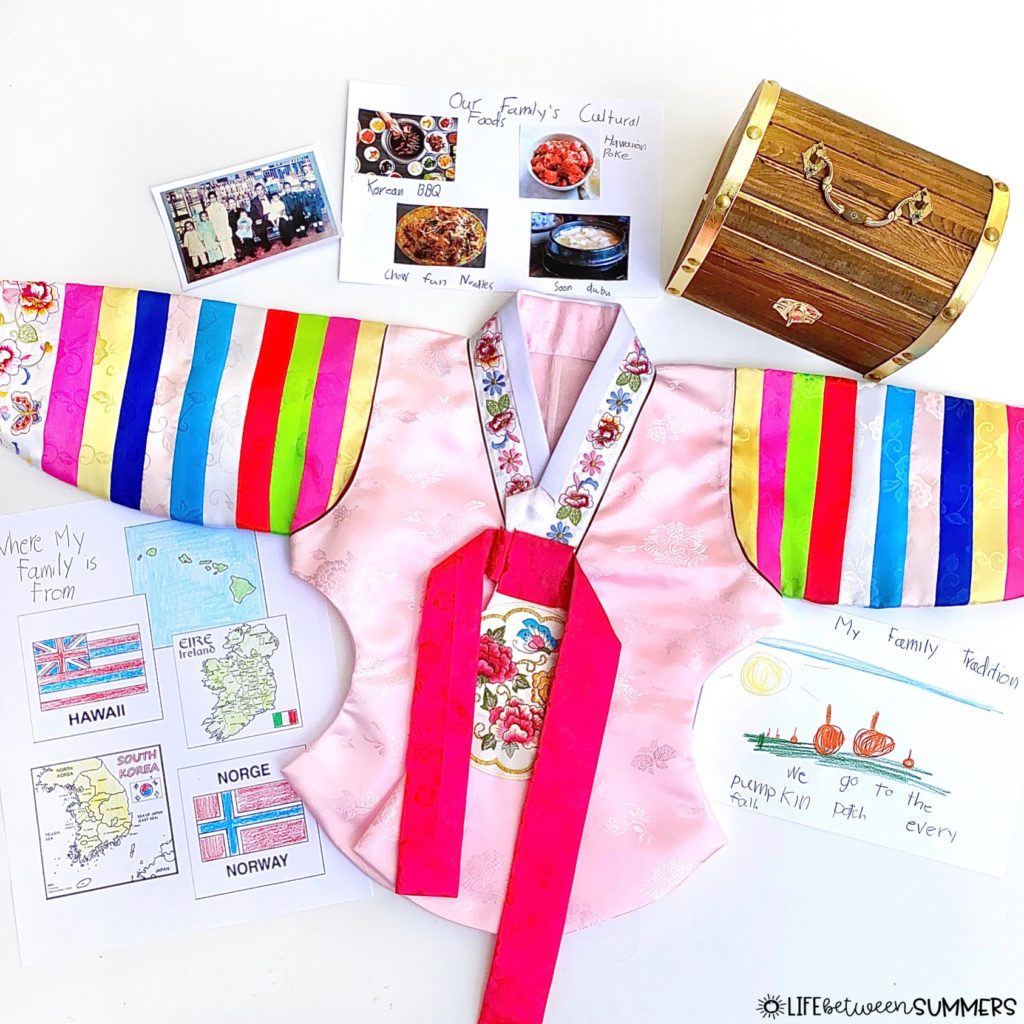
In past years, I’ve had each student do an oral presentation in front of the class where they tell about the items in their box.
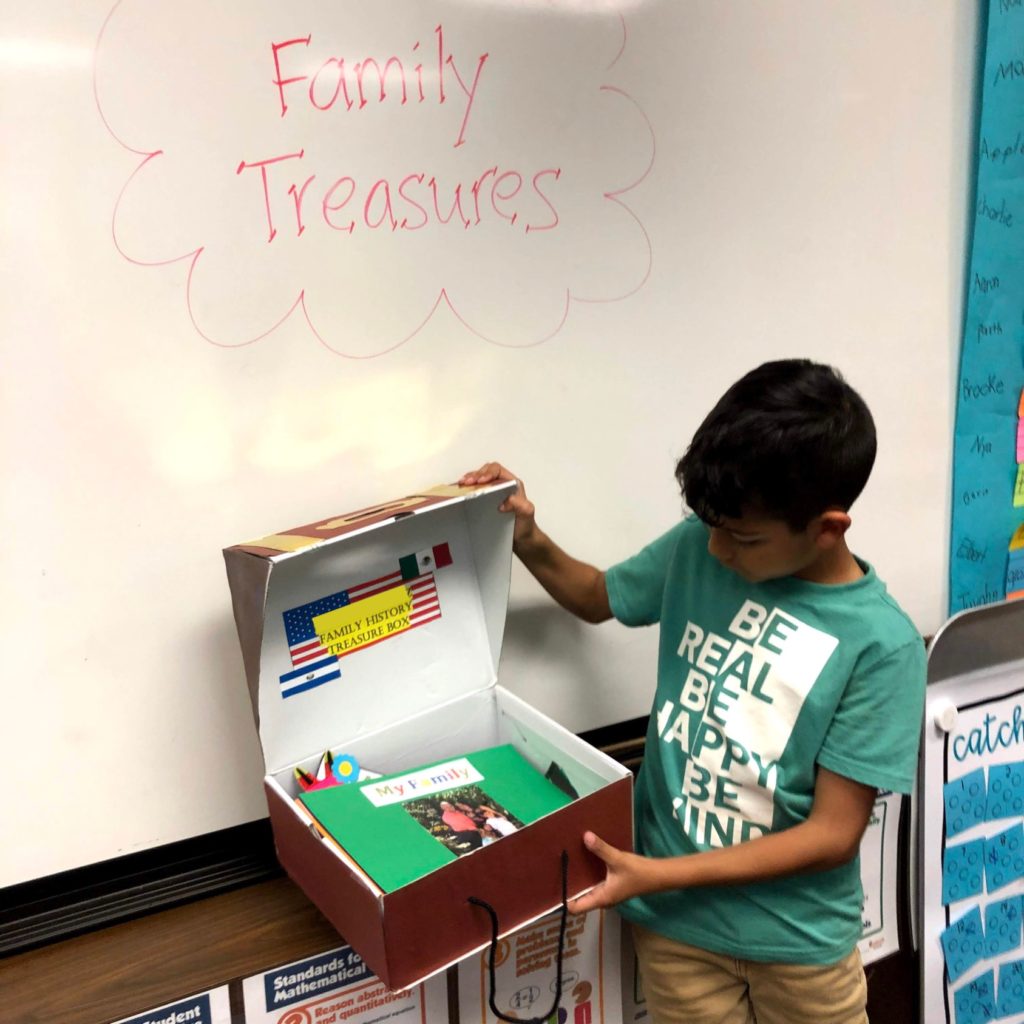
In this new world of social distancing, the way I’m going to still make it possible for students to do presentations is to have them record a video of themselves and submit it on Flipgrid. This could be done through many other platforms as well (Seesaw, etc.)
I always like to tie in writing practice whenever possible, so there is a written component to the project too. The questions that I have my second graders answer are listed on a second page of project guidelines:
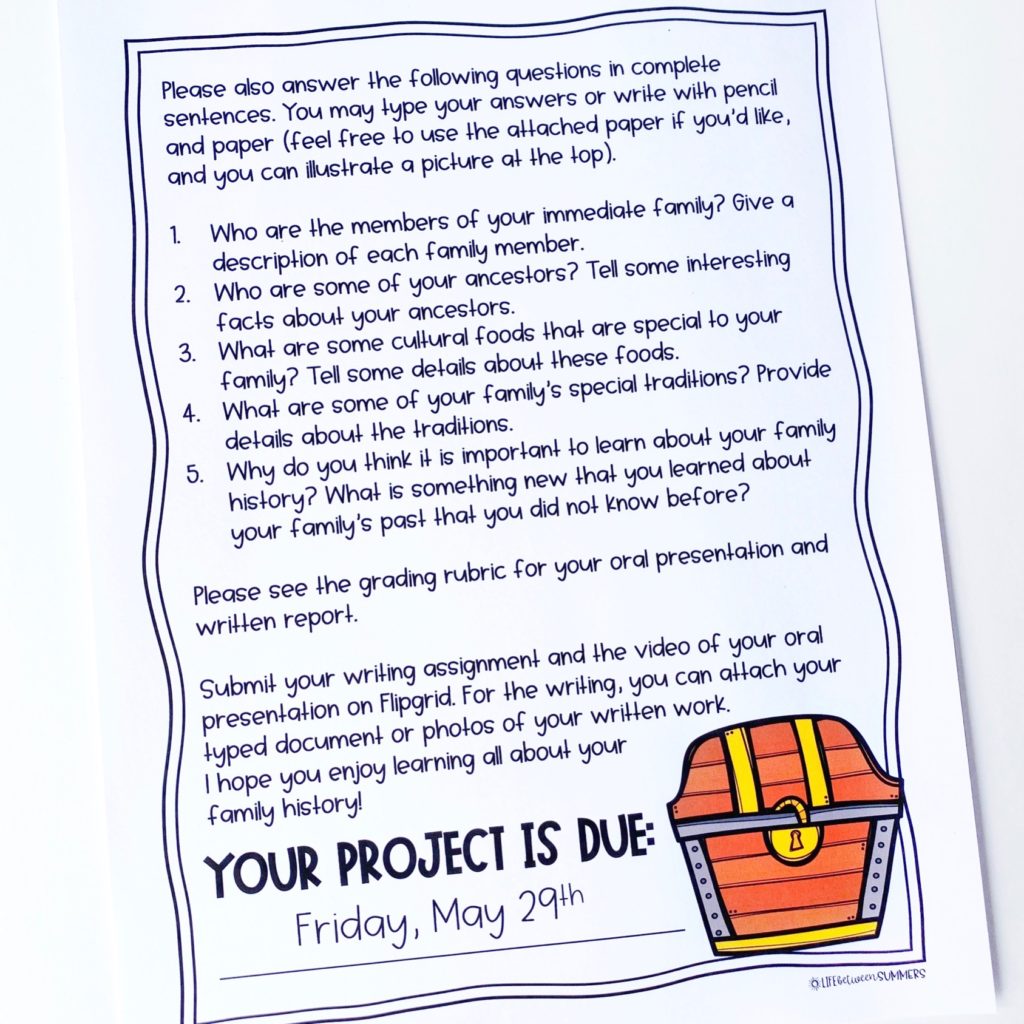
This year, I’ll be having my class submit their writing electronically. They have the option of typing their written report onto Google slides, or writing it in pencil (in which case they will take a picture of it and send it as an attachment). For those students who choose to hand write their report, I’ll be providing them with writing paper they can choose to print at home if they would like to. I know that some schools provide students with packets for distance learning, so distributing the writing paper that way might be another option for some. Here’s what the writing paper looks like (writing courtesy of my kindergartener…I’m currently homeschooling my own kids while in quarantine, and we recently just did this project at home ourselves)!
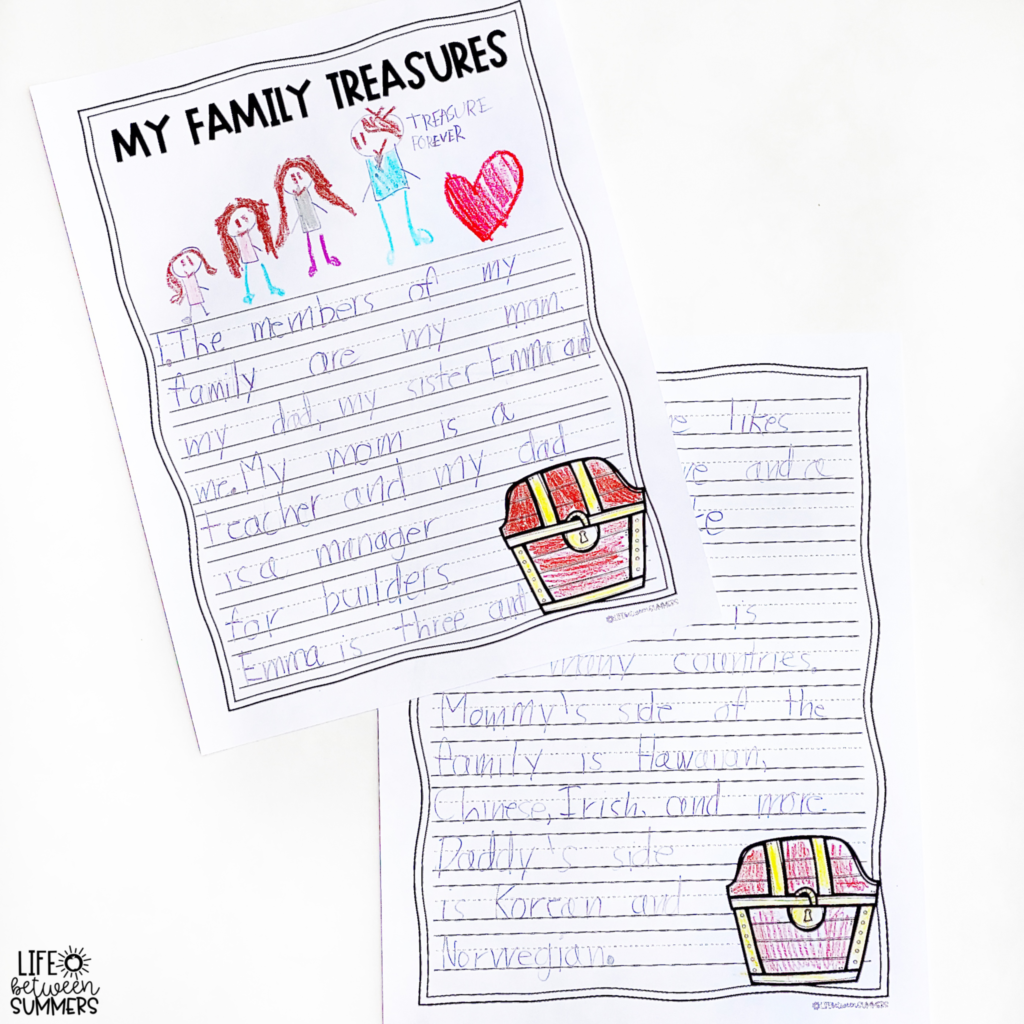
The last page I send home is a rubric, so that students (and parents or family members who are helping them) know exactly what to include.
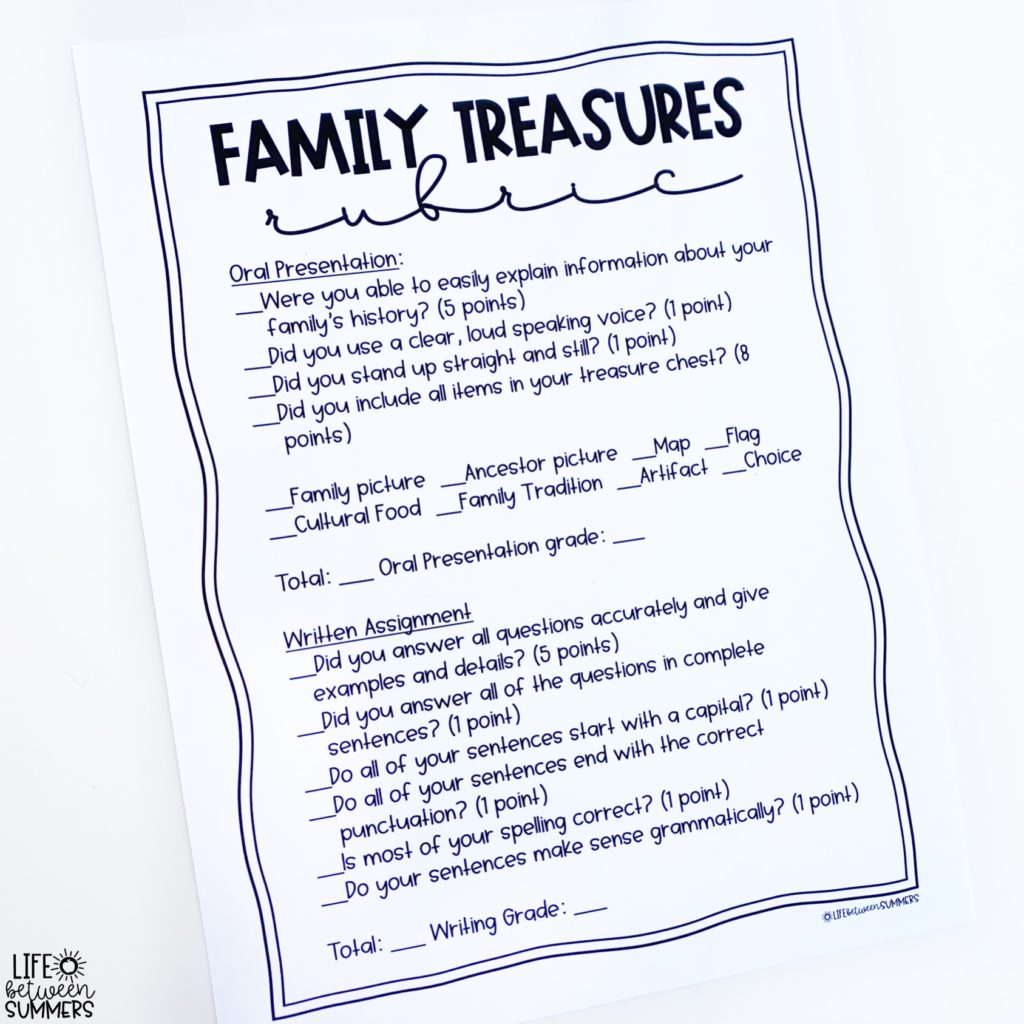
If this is a project you’d like to give your own students to do with their families at home (whether it’s this school year, or maybe something you’d like to save for when we’re eventually back in the classroom next year), you can get it here on my site or in my store on Teachers Pay Teachers. It comes with a digital version (Google slides), as well as a regular printable version. The guidelines, writing paper, and rubric are included, and the resource is editable in case you would like to customize it to meet the needs of your own class.
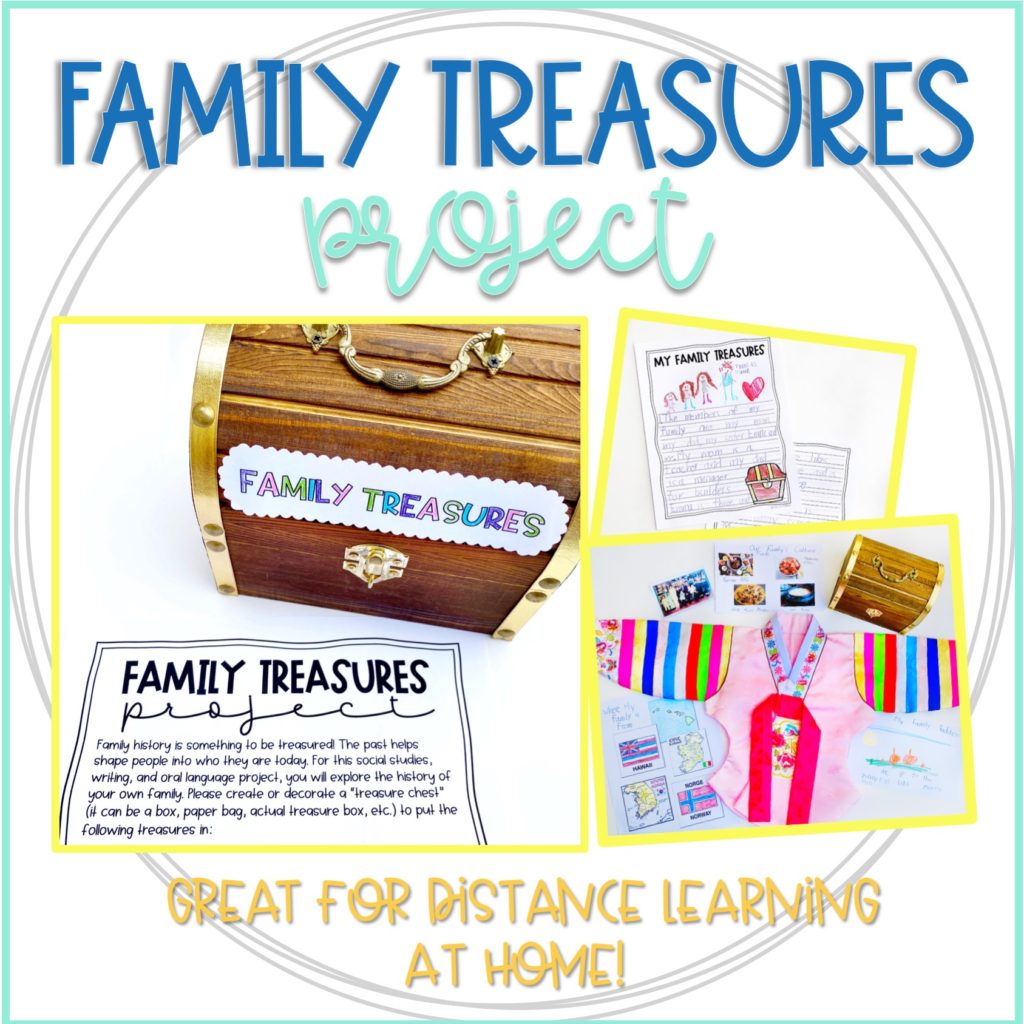
Speaking of families, I hope that all is well with yours during this unprecedented time! The health and safety of your own family is definitely something to be most treasured.


Leave a Reply
You must be logged in to post a comment.